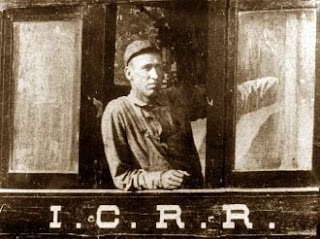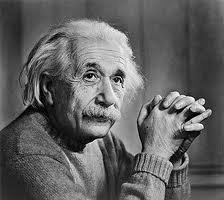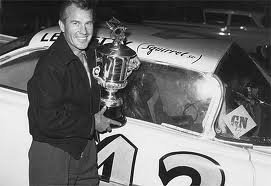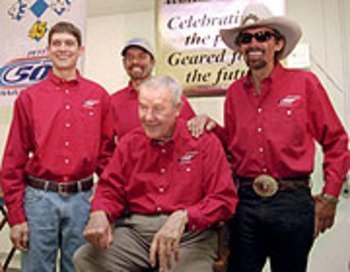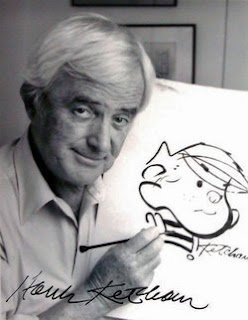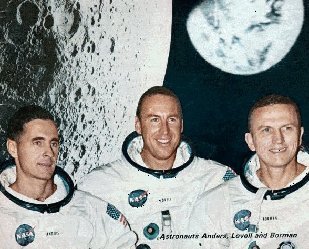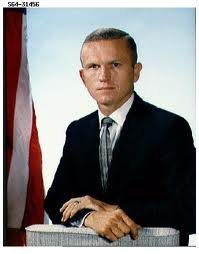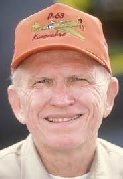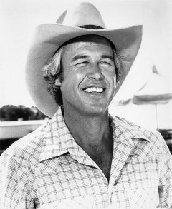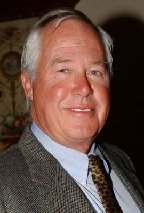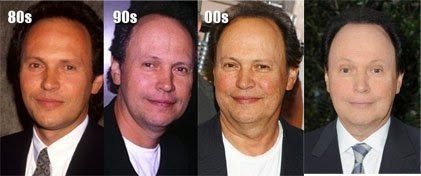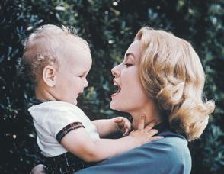
The cowboy hat is a high-crowned, wide-brimmed hat best known as the defining piece of attire for the North American cowboy. Today it is worn by many people, and is particularly associated with ranch workers in the western and southern United States, western Canada and northern Mexico, with many country, regional Mexican and sertanejo music performers, and with participants in the North American rodeo circuit. It is recognized around the world as part of Old West apparel.
The cowboy hat as known today has many antecedents to its design, including Mexican hats such as the sombrero, the various designs of wide-brimmed hat worn by farmers and stock men in the eastern United States, as well as the designs used by the United States Cavalry.
The first western model was the open-crowned "Boss of the Plains", and after that came the front-creased Carlsbad, destined to become "the" cowboy style. The high-crowned, wide-brimmed, soft-felt western hats that followed are intimately associated with the cowboy image.
The concept of a broad-brimmed hat with a high crown worn by a rider on horseback can be seen as far back as the Mongolian horsemen of the 13th century. The hat has a tall crown that provides insulation, and a wide brim that provides shade. Hot and sunny climates inspire designs with very wide brims such as the sombrero of Mexico.
It is not clear when the cowboy hat received its name. However, European-Americans in the Western United States originally had no standard head wear. People moving West wore many styles of hat, including top hats, bowlers, Civil War headgear such as cavalry and slouch hats, and sailor hats. Contrary to popular belief, it was the bowler and not the cowboy hat that was the most popular in the American West, prompting Lucius Beebe to call it "the hat that won the West". The working cowboy wore wide-brimmed and high-crowned hats. The hats were most likely adopted from civil war era slouch hats and may have been influenced by the Mexican Vaqueros before the invention of the modern design. John Batterson Stetson is credited for originating the modern day American Cowboy Hat.
The original "Boss of the Plains", manufactured by Stetson in 1865, was flat-brimmed, had a straight sided crown, with rounded corners. These light-weight, waterproof hats were natural in color, with four-inch crowns and brims. A plain hatband was fitted to adjust head size.] The sweatband bore Stetson's name. While only making one style of hat, they came in different qualities ranging from one-grade material at five dollars apiece to pure beaver felt hats for thirty dollars each. J.B. Stetson was the first to market the "Boss of the Plains" to cowboys, and it has remained the universal image of the American West. The charisma of the West was carried back East when adventurers returned in the expensive "Boss of the plains" style hat. In the 19th century and first half of the 20th century, a hat was an indispensable item in every man's wardrobe. Stetson focused on expensive, high-quality hats that represented a real investment for the working cowboy and a statement of success for the city dweller.
The durability and water-resistance of the original Stetson obtained additional publicity in 1912, when the battleship USS Maine was raised from Havana harbor, where it had sunk in 1898. A Stetson hat was found in the wreck, which had been submerged in seawater for 14 years. The hat had been exposed to ooze, mud, and plant growth. However, the hat was cleaned off, and appeared to be undamaged.
Design
Modern cowboy hats are made of fur-based felt, straw or, less often, leather. They are sold with a tall, rounded crown and a wide flat brim. They have a simple sweat band on the inside to stabilize the fit of the head, and usually a small decorative hat band on the outside of the crown. Hats are customized by creasing the crown and rolling the brim. Hats are also sold pre-creased and pre-rolled. Often a more decorative hat band is added. In some places, "stampede strings" or "wind strings" are also attached. Hats can be manufactured in virtually any color, but are most often seen in shades of beige, brown and black. Beginning in the 1940s, pastel colors were introduced, seen often on hats worn by movie cowboys and rodeo riders. "Today's cowboy hat has remained basically unchanged in construction and design since the first one was created in 1865 by J.B. Stetson."
Modern designs
The modern cowboy hat has remained basically unchanged in construction and underlying design since the Stetson creation. The cowboy hat quickly identified its wearer as someone associated with the West. "Within a decade the name 'John B. Stetson' became synonymous with the word 'hat' in every corner and culture west of the Mississippi River." The shape of the hat's crown and brim were often modified by the wearer for fashion and to protect against weather by being softened in hot steam, shaped, and allowed to dry and cool. Because of the ease of personalization, it was often possible to tell where a cowboy hat was from, right down to which ranch, simply by looking at the crease in the crown.
Later as the mystique of the Wild West was popularized by entertainers such as Buffalo Bill Cody and western movies starring actors such as Tom Mix, the Cowboy hat came to symbolize the American West. John Wayne christened them "the hat that won the West". The Boss of the Plains design influenced various wide-brimmed hats worn by farmers and ranchers all over the United States. Later designs were customized for law enforcement, military and motion pictures.
The first American law-enforcement agency to adopt Stetson's western hat as part of their uniform was the Texas Rangers. The Texas Legislature designated the cowboy hat as the official "State Hat of Texas" in 2015.
- 2 pounds ground beef
- 1 small eggplant, peeled and diced (about 4 cups)
- 3 garlic cloves, minced
- 1/8 teaspoon ground cinnamon
- 1 1/2 teaspoons salt, divided
- 1/4 teaspoon black pepper
- 2 cups spaghetti sauce
- 5 tablespoons butter
- 4 tablespoons all-purpose flour
- 3 cups milk, warmed
- Preheat oven to 350º. Coat a 3-quart baking dish with cooking spray.
- In a large skillet, sauté the ground beef over medium-high heat 7 to 8 minutes, or until crumbly and only slightly pink; drain off any excess liquid.
- Add the eggplant to the skillet and sauté 5 to 6 minutes, until the eggplant begins to soften. Add the garlic, cinnamon, 1 teaspoon salt, and the pepper; mix well. Add the spaghetti sauce and cook 4 to 5 more minutes, until hot; place mixture in the baking dish.
- In a medium sauce pan, melt the butter over medium heat. Add the flour and stir until smooth, 3-4 minutes. Add the warm milk to the flour mixture, 1 cup at a time whisking continuously until smooth. Bring to a boil, stir in remaining salt and cook for 2-4 minutes or until thickened. Pour over meat mixture.
- Bake 40 to 45 minutes, or until the custard-like top is set.
****If you want to make this a day or two before serving, go ahead. Just put it together through Step 3. Cover and refrigerate the meat mixture in the baking dish until ready to finish as directed in Steps 4 and 5.
1946 – Steve Kanaly, American actor
1948 – Billy Crystal, American actor and comedian
Saratoga Chips
Classic Potato Chips
HOW TO OBSERVE
A needed rest can make you feel better and also improve your mood. After having the extra amount of sleep, a person will notice that they will be more productive and energetic. Numerous studies have shown that short 10-20 minute naps are the most effective when midday fatigue hits. Improvements in alertness, productivity, and mood have all been shown to improve with this type of snooze.
Though there are some of us who are just not the napping kind, if you can reap those benefits, find a cozy spot for 10 minutes or so on National Napping Day.
HOW TO OBSERVE
- Catch some zees!
- Be sure to nap early enough in the day so as to not interrupt your regular sleep cycle.
- Create a perfect napping environment.
- Share your favorite type of nap or why you enjoy a good snooze.
NATIONAL NAPPING DAY HISTORY
William Anthony, Ph.D., a Boston University Professor, and his wife, Camille Anthony, created National Napping Day in 1999 as an effort to spotlight the health benefits to catching up on quality sleep.
Q. Are there any benefits to taking a nap?
A. Yes. Several
Q. Can a nap be too long?
A. Yes. Long naps and naps taken late in the day can negatively impact our nighttime sleep habits. According to the Mayo Clinic, an optimal nap time is between 10 and 20 minutes.









